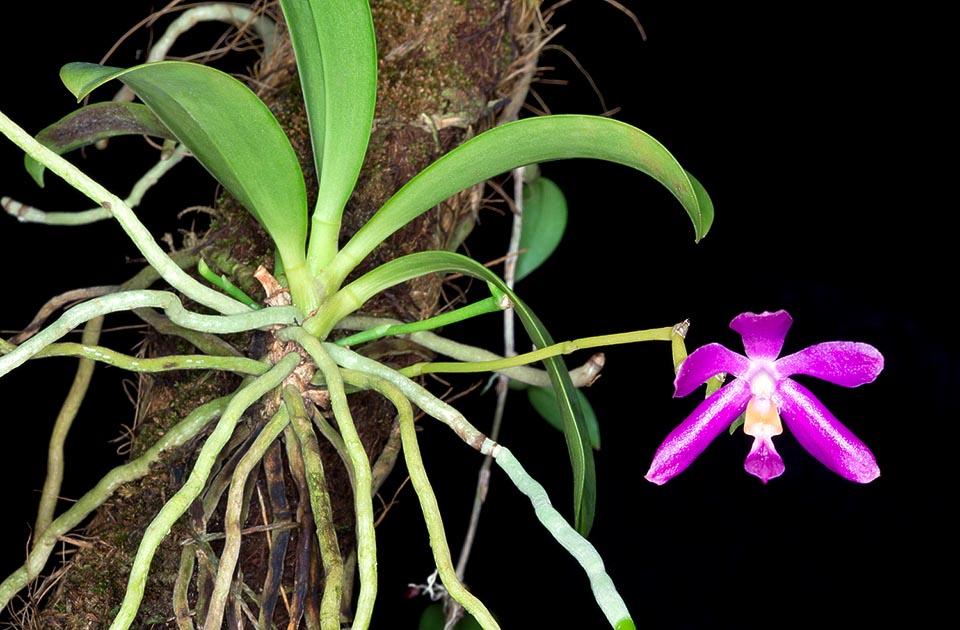Family : Orchidaceae

Text © Pietro Puccio

English translation by Mario Beltramini
The species is native to Philippines where it grows in the humid forests close to the water streams, up to about 600 m of altitude.
The generic name is the combination of the Greek substantives “φάλαινα” (phalaina) = butterfly and “ὄψις“ (opsis) = look, with obvious reference; the specific name is the Latin adjective “pulcher, chra, chrum” = beautiful.
Common names: purple orchid (English).
The Phalaenopsis pulchra (Rchb.f.) H.R.Sweet (1968) is an epiphytic species with short stem covered by the imbricate foliar bases and oblong-elliptic fleshy leaves with slightly pointed apex, 12-18 cm long and 5-6 cm broad. Arcuate lateral inflorescences, 10-25 cm long, bearing few fleshy flowers, glossy, of uniform dark magenta colour with yellow spot on the lateral lobes of the labellum, long lasting, about 4 weeks, of 4-5 cm of diameter. Ovate-elliptic sepals with slightly pointed apex, 1,8-2,6 cm long and 1-1,5 cm broad, elliptic to ovate-elliptic petals with more or less pointed apex, 1,6-2,2 cm long and 0,8-1 cm broad. Trilobed labellum, 1,8-2,3 cm long and 1,6-2 cm broad, with oblong erect lateral lobes with truncated apex and flabellate median lobe, fleshy, keeled along the median line and provided of scattered hairs at the centre close to the apex; the column, slightly arcuate, is 0,8-1,2 cm long. It reproduces by seed, in vitro, by micropropagation and at amateurish level through the young plants that easily form on the inflorescence (in slang , “keiki”, meaning in Hawaiian “sons”), that can be removed once a good rooting apparatus is formed.

Phalaenopsis pulchra is a Philippines epiphyte with 12-18 cm leaves and showy flowers, of 4-5 cm of diameter, lasting almost one month © Giuseppe Mazza
The species is reported in the appendix II of CITES (species whose trade is internationally ruled).
Synonyms: Phalaenopsis lueddemanniana var. pulchra Rchb.f. (1875); Phalaenopsis lueddemanniana var. purpurea Ames & Quisumb. (1932); Polychilos pulchra (Rchb.f.) Shim (1982).
→ For general notions about ORCHIDACEAE please click here.
